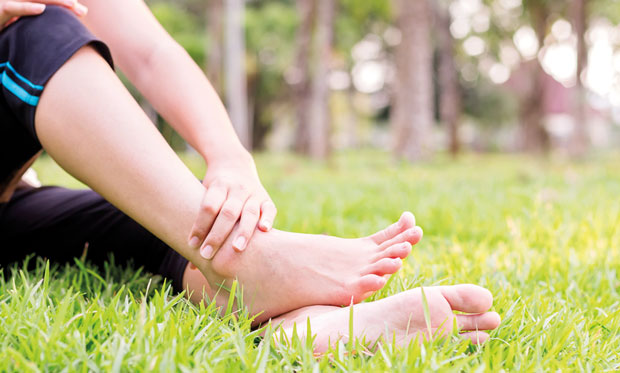26 Jul 2017 - {{hitsCtrl.values.hits}}

 “I am fed up of this overwhelming urge to move my legs when lying down at night, resulting in a disturbed sleep. This condition makes me tired and exhausted when waking up the following morning. There is also this itchy and burning sensation in my legs. This appears just as I lie down on the bed to sleep. It disappears after getting up and walking around, but unfortunately returns when lying down again”
“I am fed up of this overwhelming urge to move my legs when lying down at night, resulting in a disturbed sleep. This condition makes me tired and exhausted when waking up the following morning. There is also this itchy and burning sensation in my legs. This appears just as I lie down on the bed to sleep. It disappears after getting up and walking around, but unfortunately returns when lying down again”
This is what Anoma (49) complained about of when she met me at the clinic last week. Does this scenario sound familiar to you?
If yes, you might also be a victim of this neurological condition known as Restless Leg Syndrome (RLS).
Definition
Restless leg syndrome, also known as ‘Willis-Ekbom Disease’ is a neurological condition, characterized by several unpleasant sensations (creeping, crawling) in the legs and is associated with the urge to move legs, particularly experienced at night when trying to sleep. Although, there can be only a single symptom, most people will experience symmetrical symptoms where both sides of the body get affected. In the latter case there are similar distribution patterns.
These unusual sensations, quite similar to cramps, occur with soreness. This condition is mostly seen in the calves, while feet, thighs, arms and the hands can also get affected rarely. Some people may even experience sensations similar to shooting darts, a surge of electricity or insects squirming inside the legs due to this condition. The severity of the condition can range from some discomfort to extreme pain.

Lying and relaxing positions will often aggravate the restless movements which will keep people awake or give rise to multiple sleep disturbances with various negative consequences. Some of them are poor performance at work, exhaustion, day time fatigue and depression.
With a slight female predominance, RLS can occur at any age although elderly people are prone to it more due to various underlying health conditions.
Even though the exact etiology of RLS isn’t known, several factors discussed below are thought to play important roles in identifying the signs and symptoms associated with this condition.
1. Idiopathic RLS (Primary RLS) - This is the commonest cause of RLS, which is clinically diagnosed by excluding other causes.
2. Genetics- With a research-based familial predisposition, most genes linked with RLS are known to affect people, below age 40.
3. Dopamine- This is a neurotransmitter which acts as a messenger between the brain and the peripheral nervous system with regard to muscle coordination and regulation of movements.
Decreased levels of Dopamine, due to lack of production or increased destruction on nerve damages, can result in muscle spasms and involuntary movements.
However, latest research studies have revealed that Dopamine levels naturally drop towards the end of the day, which is thought to be the reason for RLS symptoms to precipitate particularly at night.
4. Medical conditions- Also known as secondary RLS, this type generally takes place as a result of an underlying health condition.
Iron Deficiency Anemia- Low levels of iron in the body can ultimately reduce the production of Dopamine, which will lead to previously mentioned precipitation of symptoms related to RLS.
Chronic diseases- Chronic Kidney Disease, Rheumatoid Arthritis, Parkinson’s disease, diabetes, Fibromyalgia are known to be having a predisposition tendency to cause RLS, if left untreated for a long period of time.
5. Pregnancy- Most pregnant women tend to develop RLS, due to no exact etiology, but symptoms will appear usually from 27th weeks and gradually reduce and disappear about 4 weeks after delivery.
In addition to above mentioned causative agents, following factors are also known to play a major role, in the etiology of RLS.
Chronic smoking
Caffeine
Alcohol
Obesity
Stress
Lack of physical exercise
Drugs
- Antidepressants
-Antipsychotics
-Lithium – Treatment for bipolar disorder
-Calcium channel blockers – Treatment of high blood pressure
-Antihistamines
-Metoclopramide –Treatment of nausea

How is it diagnosed?
A complete history on symptoms and the duration along with a thorough physical examination is highly important in making the diagnosis of RLS. However, various blood investigations, nerve conduction studies and Doppler studies will be carried out in order to confirm the diagnosis. Therefore, it’s advisable to seek medical advice if you are one of those individuals who has been experiencing the aforementioned signs and symptoms, affecting the quality of life.
Home remedies and treatment
Treating underlying medical conditions
Practice regular sleeping patterns
Iron, folic acid, Magnesium and vitamin supplements on medical advice
Regular exercises
Acupuncture
Symptom relief- Hot bath, leg massages, heating pad or ice packs
Drugs such as Central Nervous System Depressants, Opioids and Anticonvulsants (levodopa preparations and dopamine agonists)
Take home message
Even though there is no exact cure for RLS, early diagnosis and proper treatment plans will help to improve the quality of life by minimizing the possible disabilities and complications, in affected individuals.
23 Dec 2024 8 hours ago
23 Dec 2024 23 Dec 2024
23 Dec 2024 23 Dec 2024
23 Dec 2024 23 Dec 2024